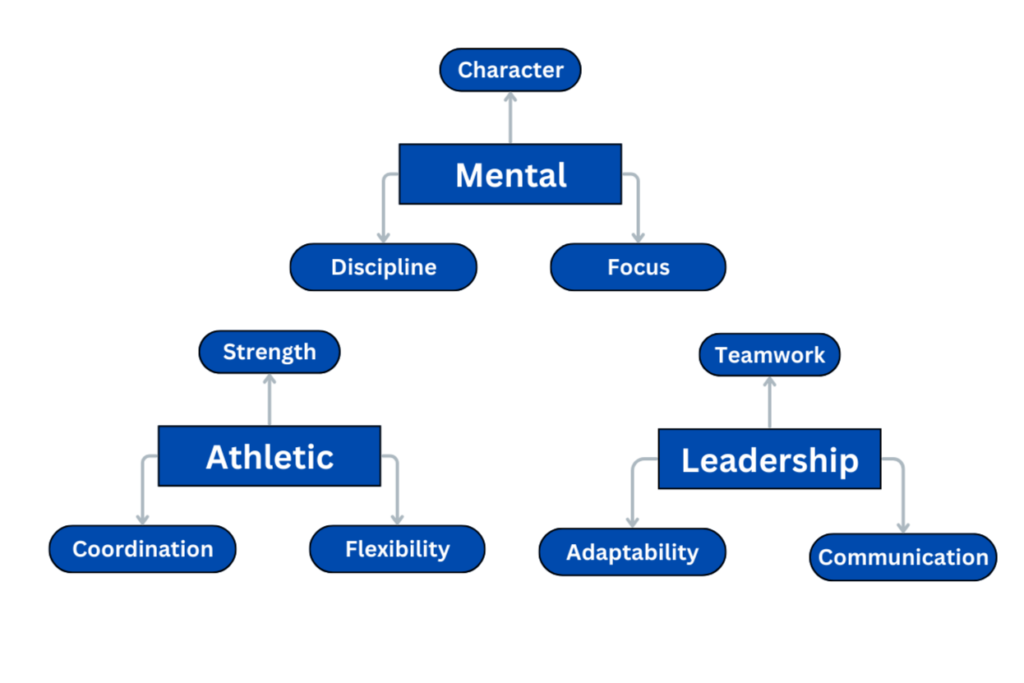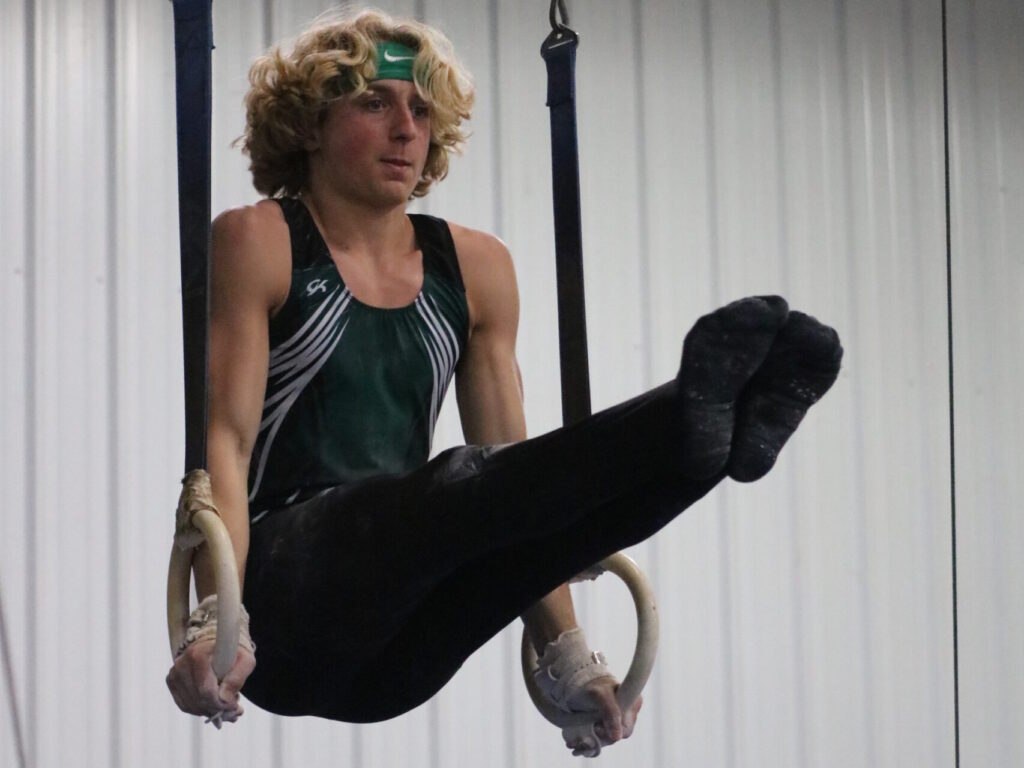Summary
Men’s gymnastics is a rewarding sport showcasing athleticism and acrobatics. Men’s Gymnastics offers physical, mental, and social benefits. In the US, there are a number of pathways to get involved in the sport from rec to college and elite gymnastics. To get started, find a gym and sign up to do gymnastics today!
As we publish this article on National Gymnastics Day 2024, and in the wake of the Paris Olympics, it has never been a better time to get involved in Men’s Gymnastics. An extremely rewarding sport, gymnastics develops superb athletes with strong leadership and character. Within this article, we will discuss various benefits of gymnastics and the different ways to get involved in gymnastics, from rec to college and elite gymnastics, as well as what happens after your time competing has come to an end. Finally, we will provide some helpful resources to help you get started with the sport of Men’s Gymnastics.
Benefits of Men’s Gymnastics
Men’s Gymnastics provides physical, mental, and social benefits to athletes. Gymnastics develops strength, flexibility, and coordination, keys to making a well-rounded athlete. Likewise gymnastics teaches discipline and focus, while encouraging athletes to become resilient. In an environment of peers and mentors working toward common goals, athletes learn the value of teamwork, communication, and adaptability.

What pathways exist in gymnastics?
The USAG has a great page detailing the different pathways to do gymnastics in the United States. In summary, we can break the various pathways down by level of commitment, level of competitiveness, and age.
Recreational Gymnastics:
– Any Age (yes, adults included)
– Low Time Commitment, < 10 hours per week
– One of the best ways to begin your gymnastics journey, recreational gymnastics is the simplest and most common way to start men’s gymnastics. Local gyms offer rec classes for varying skill levels and varying ages, from toddlers to adults.
USAG Club Track :
– School-age kids, 6-19
– Varying levels of commitments, but usually low time commitment.
– For youth and teenage athletes, the Club Track provides a low-commitment entry into competitive gymnastics. Athletes who want to commit more time can jump into the USAG National Track when ready.
National Track – Compulsory:
– Age 6-16
– Roughly 4-16 hours per week, more as gymnasts get older
– Requiring more training than Club Track, the Compulsory Track aims to develop young gymnasts’ foundations for high-level gymnastics and provides more competitive opportunities.
National Track – Optional:
– Age 12-19
– Roughly 10-25 Hours, depending on level of commitment.
– Competing against other gymnasts across the state, region, and nation, athletes following the Optional track begin developing high-level gymnastics abilities. This is a common path for gymnasts coming from the Compulsory Track. Gymnasts following this path can continue gymnastics in college through the NAIGC and GymACT, and may even earn a chance at competing in the NCAA.
USAG Elite Track:
– Age 8+, this includes elite adult athletes
– High level of commitment
– The Elite Track is for gymnasts looking to perform at the highest levels of men’s gymnastics. With pathways for both junior and senior athletes, the goal of the Elite Track is to set a high standard for USA Men’s Gymnastics while recognizing and developing the best gymnasts. In addition, gymnasts within the Elite Track may earn spots on the US National Team and compete at the international level.
What are the college opportunities for Men’s Gymnastics?
Summarizing our article detailing college men’s gymnastics opportunities, gymnasts have three avenues to continue competing in college.
NAIGC: A grassroots effort to support the gymnastics community, the National Association of Intercollegiate Gymnastics Clubs aims to support adult gymnastics in the United States. With far more clubs than NCAA and GymACT programs, the NAIGC includes numerous recreational collegiate clubs at universities across the country. The NAIGC is a volunteer-run non-profit, and NAIGC clubs are often volunteer-run as well.
GymACT: An organization focused on expanding college men’s gymnastics, GymACT provides an alternative to NCAA programs for athletes who want to compete at a high level in college. Teams in the GymACT are self funded and therefore cannot provide perks, such as scholarships, that NCAA teams can. However, due to the organization’s independence from the NCAA, GymACT can give opportunities to athletes that the NCAA can’t, such as expanded eligibility.
NCAA: NCAA Gymnastics is the highest level of collegiate gymnastics. With scholarship opportunities and school funding, NCAA gymnasts have the most support continuing their athletic journey. However, earning a spot on an NCAA team is much harder than joining the NAIGC or GymACT. Teams compete for conference and NCAA championships, as well as individual accolades. Also, while pursuing spots on the USA National Team, many elite track gymnasts join NCAA teams to get a college education.
How can I be involved if I don’t want to compete?
The gymnastics community always needs more coaches and judges! Those who love gymnastics but are beyond their training days can take up coaching or judging to support the sport.
Furthermore, for adult gymnasts with enough skill, circus and stunting may provide professional opportunities to former gymnasts.
How can I get started?
The USAG website has a resource to help you find local gyms.
For judges, visit NGJA.org to become a judge.
For college opportunities, check out the web pages for NAIGC, GymACT, the CGA, and the NCAA website.

